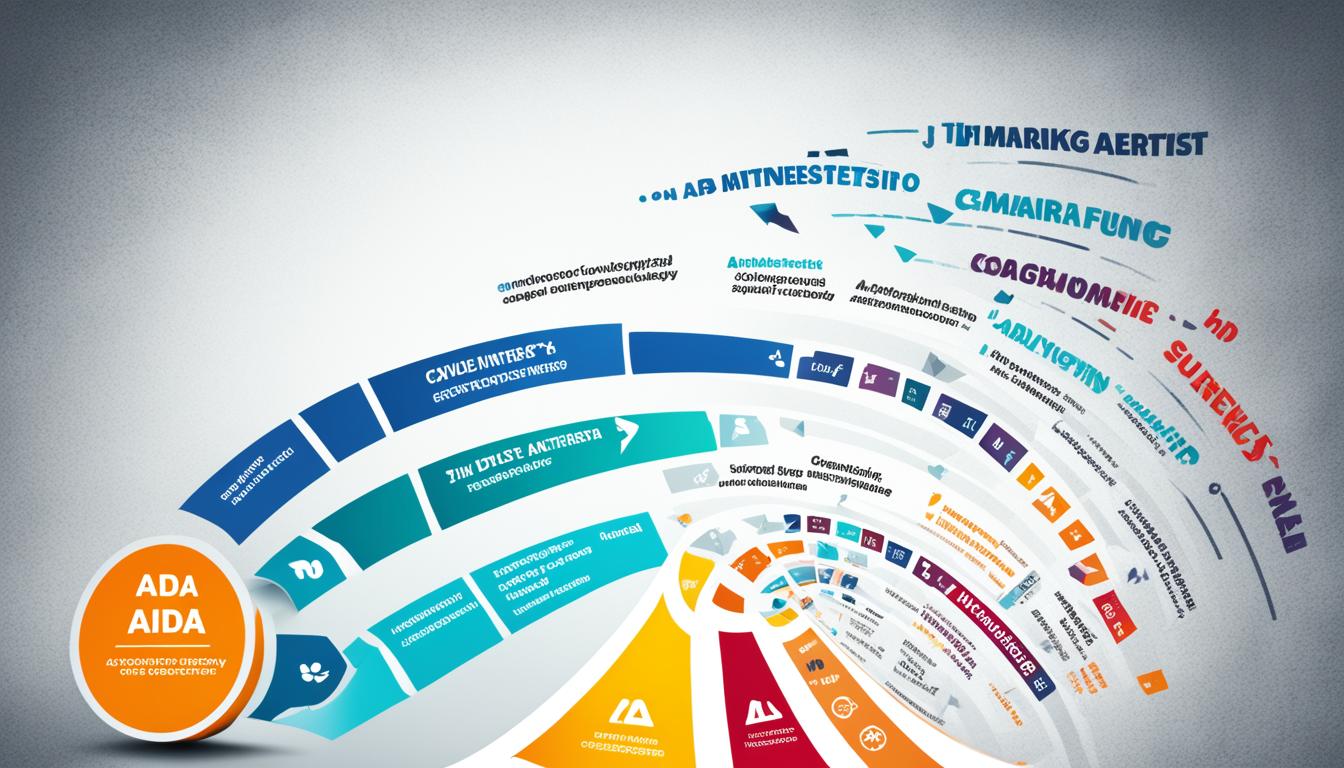Understanding the differences between organic and inorganic marketing is essential for brands aiming to optimize their strategies. Organic marketing focuses on building a sustainable presence through genuine engagement, while inorganic marketing uses paid strategies for quicker results. Each approach has its unique strengths, offering valuable insights into how businesses can effectively reach their audiences.
The debate between these two marketing methods impacts not just visibility but also the overall cost-effectiveness and audience connection. While organic marketing relies on tactics like content creation and SEO, inorganic marketing leverages paid ads and sponsored posts to drive immediate traffic. Recognizing the right balance can be crucial for a brand’s long-term success.
By exploring the nuances of organic and inorganic strategies, brands can better navigate the digital landscape and enhance their online reputation. Understanding these dynamics is vital for anyone looking to achieve meaningful engagement with their audience.
Key Takeaways
- Organic marketing emphasizes relationship building for lasting impact.
- Inorganic marketing provides fast results but requires financial investment.
- A balanced approach can enhance both visibility and audience loyalty.
Understanding Marketing Fundamentals
A solid grasp of marketing fundamentals is essential for businesses navigating the landscape of organic and inorganic marketing. This part explores the definitions and significance of these two marketing approaches and emphasizes the necessity of a well-defined marketing strategy.
Defining Organic and Inorganic Marketing
Organic marketing refers to strategies that attract customers naturally over time. This can include content marketing, social media engagement, and search engine optimization (SEO). These methods aim to build strong relationships with potential customers, enhancing brand awareness and fostering trust.
Inorganic marketing, in contrast, relies on paid tactics to achieve quicker results. This approach typically includes pay-per-click (PPC) advertising and social media ads. While these methods can boost visibility and improve conversion rates rapidly, they often lack the depth and sustainability of organic strategies.
Importance of Marketing Strategy
A comprehensive marketing strategy is crucial for businesses to effectively reach their audience. It aligns the goals of both organic and inorganic efforts, ensuring that promotions resonate with targeted consumers.
By integrating these strategies, companies can leverage short-term gains from inorganic tactics while laying a strong foundation with organic methods. This balanced approach not only drives immediate traffic but also cultivates long-lasting customer relationships.
Ultimately, understanding these elements helps marketers make informed decisions that support both growth and brand stability in a competitive marketplace.
Organic Marketing Explained
Organic marketing focuses on building a brand’s presence and reach without relying on paid advertisements. This approach emphasizes creating valuable content, engaging with audiences, and utilizing various platforms effectively.
Leveraging SEO for Visibility
Search Engine Optimization (SEO) plays a crucial role in organic marketing. By optimizing website content for relevant keywords, businesses can increase their visibility on search engines.
Key SEO practices include:
- Keyword Research: Identifying terms and phrases potential customers search for.
- On-Page SEO: Enhancing webpage titles, meta descriptions, and content structure to improve rankings.
- Backlinking: Gaining links from reputable sites to boost authority and drive traffic.
A well-executed SEO strategy can help businesses attract organic traffic, improve search rankings, and ultimately enhance brand awareness.
Role of Content Marketing
Content marketing is pivotal for engaging audiences organically. It encompasses creating valuable materials that inform or entertain target users.
Effective content strategies include:
- Blog Posts: Regular articles that address customer pain points and interests can position a brand as an industry authority.
- Email Newsletters: These allow direct communication with customers, providing personalized offers and valuable insights.
- Guest Blogging: Contributing articles to reputable sites can expand reach and establish credibility.
By focusing on quality content, brands can foster user loyalty and enhance organic engagement.
Social Media as an Organic Platform
Social media offers a powerful avenue for organic marketing. Utilizing platforms like Facebook, Instagram, and Twitter, brands can connect directly with their audiences.
Key strategies include:
- User-Generated Content: Encouraging customers to share experiences boosts authenticity and fosters community engagement.
- Consistent Posting: Regularly sharing valuable content keeps the audience engaged and informed.
- Word-of-Mouth Marketing: Building a community encourages satisfied customers to share their experiences, driving organic growth.
Social media, when leveraged effectively, serves as an influential tool for brands to achieve organic visibility and engagement.
Inorganic Marketing Strategies
Inorganic marketing focuses on paid methods to reach a target audience quickly and effectively. This includes various forms of advertising, from search ads to social media promotions, aimed at generating immediate results.
Paid Advertising Overview
Paid advertising constitutes a significant component of inorganic marketing strategies. These strategies rely on financial investment to enhance visibility and drive traffic to products or services. Common forms include pay-per-click (PPC) campaigns, banner ads, and display ads.
Platforms like Google Ads allow marketers to reach potential customers actively searching for specific terms. The effectiveness of paid advertising often hinges on well-defined target audiences, ensuring that advertisements reach the most relevant users.
Efficiency of Search Engine Marketing
Search engine marketing (SEM) is a prominent inorganic strategy that focuses on increasing website visibility through paid search ads. Advertisers bid on specific keywords, allowing their ads to appear in search results relevant to user queries.
This method provides measurable outcomes through metrics such as click-through rates and conversion rates. With retargeting capabilities, companies can engage users who previously interacted with their website. This leads to higher efficiency in reaching potential customers already familiar with the brand.
Understanding Social Media Ads
Social media ads are a dynamic part of inorganic marketing, capable of targeting specific demographics on platforms like Facebook, Instagram, LinkedIn, Twitter, and YouTube. Advertisements can take various forms, including video ads, sponsored posts, and carousel ads.
Marketers can leverage these platforms to maximize their reach through targeted advertising options. By analyzing user behavior and interests, brands can tailor their ads for enhanced engagement. The ability to use visually appealing content helps capture attention in a crowded social media space.
Comparing Effectiveness and Cost
When evaluating marketing strategies, understanding their effectiveness and associated costs is crucial. Organic and inorganic marketing both offer distinct advantages and challenges. The key lies in analyzing their return on investment (ROI) and budget implications.
Analyzing Return on Investment
Return on investment is a critical factor in assessing marketing strategies. Organic marketing tends to build long-term results through consistent engagement, leading to sustainable growth. This method emphasizes creating quality content that resonates with the audience, ultimately resulting in increased conversions over time.
In contrast, inorganic marketing can produce immediate results but may not be as cost-effective. Campaigns relying on paid ads often require significant initial investments. The return on ad spend can be high in the short term, but the effects diminish rapidly once funding ends. A thorough analysis of each strategy’s ROI is essential for making informed decisions.
Budget Considerations in Marketing
Budget considerations play a pivotal role in the choice between organic and inorganic marketing methods. Organic marketing is generally considered more cost-effective, as it relies primarily on time and creativity rather than extensive financial expenditure. For example, creating blog posts can range from $50 to $100 each, depending on complexity.
On the other hand, inorganic marketing strategies often necessitate a larger budget upfront. Businesses must allocate funds for advertisements, making it necessary to assess potential returns carefully. As they navigate their budget, organizations must weigh the immediate impact of paid campaigns against the slower, yet steady, growth prospects of organic methods. Balancing these considerations is integral to effective marketing strategy development.
Audience Connection and Engagement
Engaging with the target audience is vital for marketers wishing to establish a strong brand presence. Two essential aspects of this are effectively targeting the ideal audience and fostering brand loyalty through ongoing engagement.
Targeting the Ideal Audience
Identifying the ideal audience is the foundation of effective marketing strategies. Marketers utilize data analytics and social media insights to understand demographics, interests, and online behaviors. This information enables them to create tailored campaigns.
Demographic Analysis: Age, gender, location, and income can guide the marketing approach.
Interests and Behaviors: Understanding what the audience values helps in crafting relevant content.
By reaching the right audience, brands can enhance the effectiveness of their campaigns, leading to higher engagement and conversion rates.
Building Brand Loyalty Through Engagement
Brand loyalty stems from meaningful interactions and trust between the brand and its customers. Engaging content, such as informative articles or entertaining posts, plays a crucial role in this process.
Social Media Engagement: Active participation on platforms where the audience is present strengthens relationships.
Customer Feedback: Encouraging feedback helps brands demonstrate they value customer opinions.
Regular communication, through newsletters or social media updates, keeps the audience informed and engaged. This ongoing interaction nurtures loyalty, ultimately leading to a more dedicated customer base.
Metrics and Performance Analysis
Analyzing marketing performance is essential for determining the effectiveness of both organic and inorganic strategies. Metrics provide insights into sustainable growth, quick results, and conversions, helping marketers make informed decisions about their campaigns.
Tracking Organic Growth
Organic growth relies on effective search engine optimization (SEO) practices. Marketers should track key metrics such as organic traffic, bounce rates, and time on site to gauge performance. Tools like Google Analytics can help identify which keywords drive traffic and how users engage with content.
Monitoring backlinks is also crucial. A healthy backlink profile not only boosts SEO rankings but also contributes to credibility and trustworthiness. Metrics such as click-through rates (CTR) inform marketers about the effectiveness of their titles and meta descriptions, impacting potential conversions.
It is important to analyze data over time to understand trends. This approach enables marketers to assess the effectiveness of their content strategies and make adjustments for long-term results.
Evaluating Paid Campaign Success
For inorganic marketing, measuring the success of paid campaigns involves distinct metrics. Marketers should focus on metrics such as return on investment (ROI), cost per click (CPC), and conversion rates. These indicators help assess the efficiency of ad spend and overall campaign performance.
Tools like Google Ads provide detailed analytics, allowing marketers to adjust bids and optimize ad placements for scalability. Tracking click-through rates helps evaluate how effectively ads capture audience interest and drive quick traffic.
Additionally, conversion tracking is vital. This monitors how many users take desired actions after engaging with ads, translating paid clicks into tangible results. Analyzing these metrics offers insights into audience behavior, allowing for strategy refinements that improve campaign effectiveness.
Digital Presence and Online Reputation
A strong digital presence and positive online reputation are crucial for businesses today. This involves engaging effectively with the audience and fostering relationships through public relations and partnerships, alongside managing how the brand is perceived through reviews and recommendations.
Cultivating Online PR and Partnerships
Establishing an effective online public relations strategy involves crafting a brand narrative and engaging with both the media and influencers. Businesses can leverage digital platforms to share newsworthy content that highlights their values and innovations.
Key tactics include:
- Press Releases: Crafting compelling press releases can attract media coverage.
- Influencer Collaborations: Partnering with influencers helps in reaching wider audiences and adds credibility.
- Engagement: Actively participating in online discussions and communities enhances visibility.
Building partnerships with other organizations can also amplify reach. These collaborations allow for shared resources, co-hosted events, or joint marketing initiatives, creating greater impact and visibility in the market.
Managing Reviews and Recommendations
Managing reviews is essential for maintaining a positive online reputation. Responding promptly to reviews—both positive and negative—shows customers that their feedback is valued.
Strategies include:
- Monitoring Platforms: Regularly checking review sites and social media is vital for timely responses.
- Encouraging Feedback: Actively requesting customers to leave reviews fosters a culture of sharing experiences.
- Showcasing Testimonials: Highlighting positive reviews on company websites and social media enhances brand credibility.
Recommendations from satisfied customers can significantly influence prospective buyers. Businesses should harness these testimonials in their marketing strategies to enhance trust and encourage conversions.
Adapting to Market Changes
Businesses must remain agile in response to evolving market dynamics. Adapting to shifts involves closely monitoring algorithm updates and leveraging metadata effectively. Understanding these components can enhance online presence and improve visibility.
Algorithm Updates and Adaptation
Algorithm updates can significantly impact search engine rankings. Companies need to stay informed about these changes to adjust their strategies accordingly. For instance, Google regularly revises its algorithms to enhance the quality of search results.
Focusing on keyword research is crucial. By understanding which keywords are favored in current algorithms, marketers can tailor content more effectively. They should also evaluate site performance regularly, utilizing tools to identify areas needing improvement. Staying proactive can mitigate the risk of sudden drops in visibility.
The Role of Metadata in Search
Metadata plays a critical role in enhancing online visibility. This includes elements such as title tags, meta descriptions, and alt text for images. Optimizing these components ensures that search engines can effectively index and rank content.
Effective keyword usage within metadata can improve click-through rates. Marketers should conduct thorough keyword research to identify the most relevant terms. Additionally, regularly updating metadata in line with current trends can enhance overall online presence. Properly utilized, metadata helps align content with user intent, facilitating better engagement with target audiences.
Frequently Asked Questions
This section addresses common inquiries regarding the nuances of organic and inorganic marketing strategies. Understanding these elements helps businesses make informed decisions in their marketing approach.
What are the main differences between organic and inorganic marketing strategies?
Organic marketing relies on building a customer base through natural engagement and providing valuable content. In contrast, inorganic marketing focuses on paid methods to drive traffic and conversions quickly. The former emphasizes long-term relationships, while the latter typically offers immediate results.
Can you list some examples of organic marketing tactics?
Organic marketing tactics include content marketing, search engine optimization (SEO), social media engagement, and email newsletters. These methods encourage audience interaction without direct costs associated with advertisements. Blogging and creating informative video content are also effective strategies in this category.
What are the distinctive advantages and disadvantages of organic marketing compared to inorganic approaches?
The primary advantage of organic marketing is its potential for sustainable growth and establishing a loyal customer base. However, it often requires considerable time and effort before yielding results. In contrast, inorganic marketing can generate quick wins but comes with costs that can accumulate over time.
How do organic and inorganic marketing impact lead generation differently?
Organic marketing tends to produce higher quality leads over time, as the audience is often more engaged and interested. Inorganic methods can generate leads rapidly but may result in lower engagement rates. Therefore, the quality of leads can differ significantly between the two approaches.
What types of marketing are considered inorganic, and can you provide examples?
Inorganic marketing encompasses strategies that involve paid promotions, such as pay-per-click (PPC) advertising, display ads, and social media ads. These approaches involve financial investment to achieve visibility and attract potential customers quickly.
In terms of long-term growth, how do organic marketing efforts compare with inorganic methods?
Organic marketing efforts generally foster long-term growth by building brand trust and recognition over time. Inorganic methods can deliver short-term results but may not contribute to lasting relationships with customers. Consequently, businesses should weigh their long-term goals when choosing a marketing strategy.




